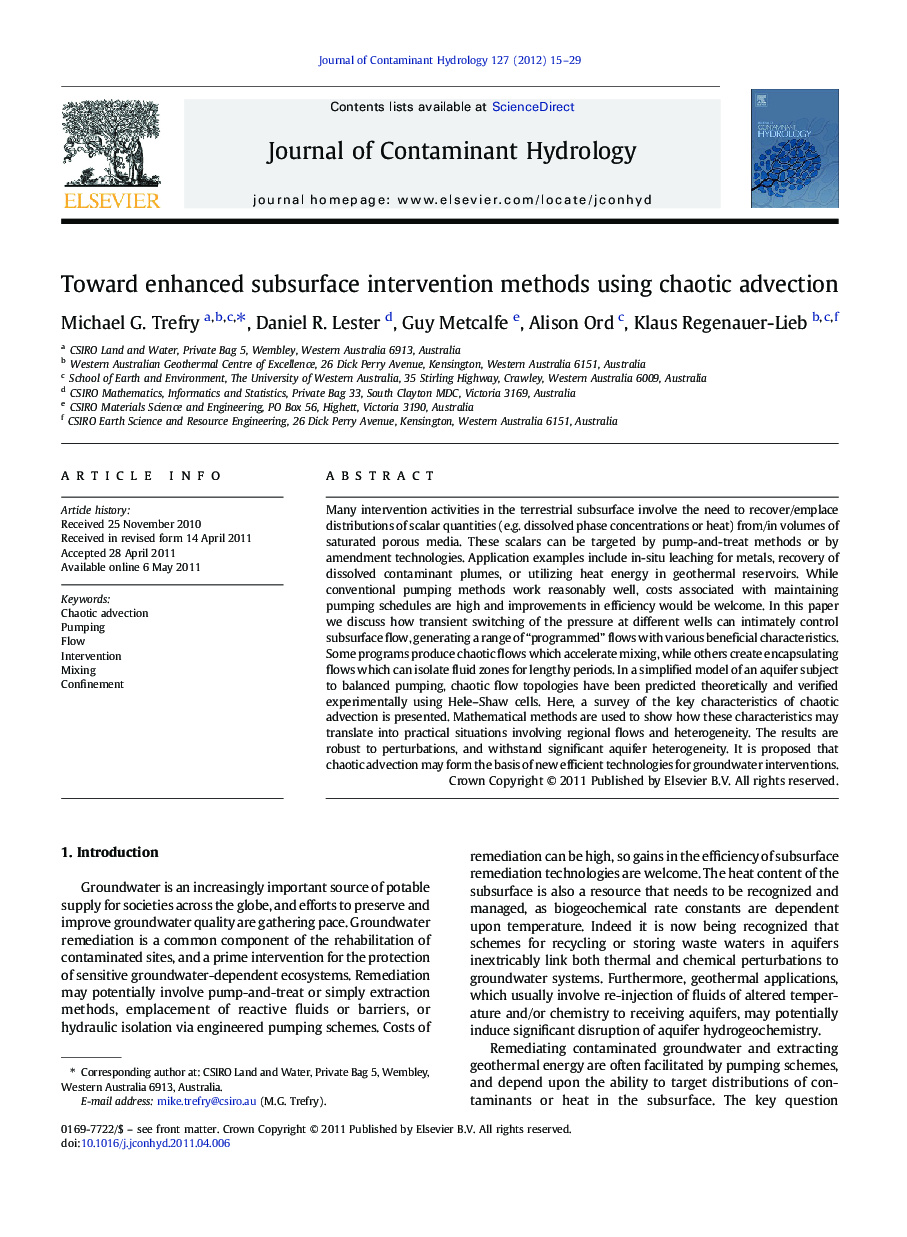| Article ID | Journal | Published Year | Pages | File Type |
|---|---|---|---|---|
| 4546885 | Journal of Contaminant Hydrology | 2012 | 15 Pages |
Many intervention activities in the terrestrial subsurface involve the need to recover/emplace distributions of scalar quantities (e.g. dissolved phase concentrations or heat) from/in volumes of saturated porous media. These scalars can be targeted by pump-and-treat methods or by amendment technologies. Application examples include in-situ leaching for metals, recovery of dissolved contaminant plumes, or utilizing heat energy in geothermal reservoirs. While conventional pumping methods work reasonably well, costs associated with maintaining pumping schedules are high and improvements in efficiency would be welcome. In this paper we discuss how transient switching of the pressure at different wells can intimately control subsurface flow, generating a range of “programmed” flows with various beneficial characteristics. Some programs produce chaotic flows which accelerate mixing, while others create encapsulating flows which can isolate fluid zones for lengthy periods. In a simplified model of an aquifer subject to balanced pumping, chaotic flow topologies have been predicted theoretically and verified experimentally using Hele–Shaw cells. Here, a survey of the key characteristics of chaotic advection is presented. Mathematical methods are used to show how these characteristics may translate into practical situations involving regional flows and heterogeneity. The results are robust to perturbations, and withstand significant aquifer heterogeneity. It is proposed that chaotic advection may form the basis of new efficient technologies for groundwater interventions.
Research highlights► We present a survey of key characteristics of chaotic advection in Darcian groundwater systems. ► Mixing enhancement, accelerated dispersion and kinematic confinement can be selected and controlled by pumping protocols. ► New results demonstrate robustness to practical phenomena including elastic pumping response, regional flows and aquifer heterogeneity.
